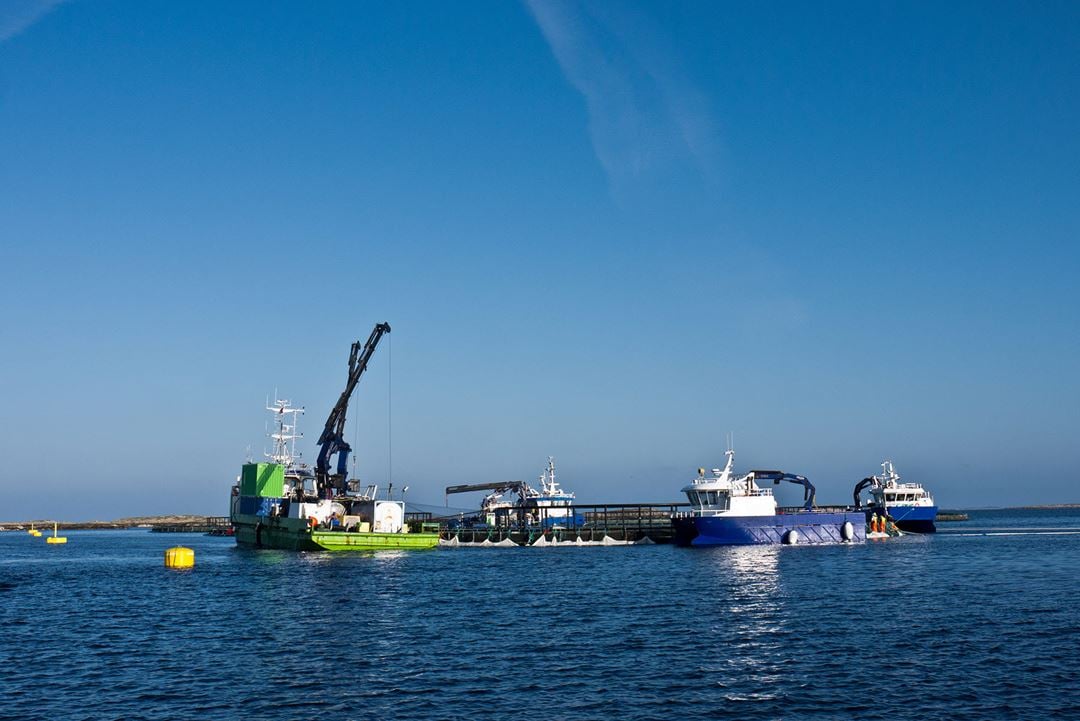Aquaculture structures

Typical applications of SIMA in aquaculture
- Station keeping of aquaculture installations
- Mooring analysis
- Feasibility studies
- Study of operating conditions
- Interaction between vessel and installation during side-by-side operations
- Wellboat operations
- Crane operations
- Fish harvesting
- Concentrating farmed fish
Modelling
A fish cage is a slender system characterised by small bending stiffness and large deformations. Slender systems with complex cross sections can be modelled in SIMA. Properties such as axial-, bending-, and torsional stiffness must be specified as input. This gives the opportunity to model a variety of different cross sections which is typical for modern fish cages. Other slender components in aquaculture well suited for this type of modelling are mooring lines, power cables, and feed pipes.
A fish net is subdivided into sections where each section is represented by a bar element with equivalent properties. The width of the net panel is defined along with other properties such as the solidity ratio of the net.
Feeding barges and wellboats are modelled as floating bodies with given motion characteristics. The different components can be connected with coupling elements and made into a complex system. An example of a complex operation is feed delivery to a feed barge. This operation includes a crane operation from a feedship connected to a moored barge. SIMA enables simulation of motions and station-keeping behaviour of all parts of the system.
Modelling Elements
-
Finite element modelling of pipes, fish nets, mooring systems, and power cables
- Vessels, barges, cranes, and fenders
- Coupling elements
- Thrusters
- Dynamic positioning systems
- Waves, wind, and current
Analysis and results
Static analysis and nonlinear time domain analysis calculate the forces and motions of the system over specified time. Examples of interesting results are the maximum tension in the mooring lines or the deformation of the floating collar for specified environmental loads.
Technology is rapidly developed for improved solutions in the aquaculture industry. SIMA provides knowledge through numerical simulation. Resources and time can be saved by using SIMA to improve the design at an early stage in the design process. Numerical simulations will help to identify critical and high risk operations in aquaculture and increase safety, operability and profitability.
Generic SIMA functionality
In addition to a flexible modelling environment, SIMA also includes post processing, workflow, optimization and report generation tools.
The SIMA Post-Processor environment assists the user in making the most out of the data generated by a simulation. Typical applications are:
- Post processing with statistics
- Spectral analysis and fatigue analysis
- Visualisation of results
More complex setups containing multiple simulations can be realised using the workflow environment. The report task allows the user to collect results from multiple analyses and combine them with additional text or mathematical formulas.